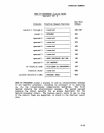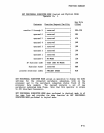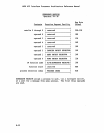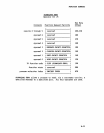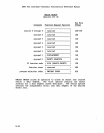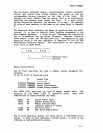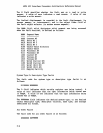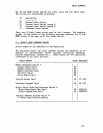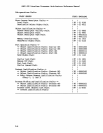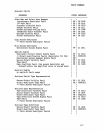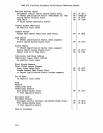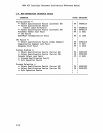
FAULT
SUMMARY
The
Peripheral
Subsystem
status,
context/process
status,
processor
status,
and
system
timer
fields
contain
the
values
of
the
the
corresponding
on-chip
registers
at
the
time
of
the
fault.
The
o:perator
id,
which
differs
fran
the
opcode
field
in
an
instruction,
specifies
the
operator
that
causes
the
fault.
If
a
fault
occurs
during
instruction
decoding,
the
operator
id
is
zero.
The
operator
id
value
of
each
operator
is
the
same
as
the
index
found
in
Appendix
B.
The
execution
state
indicates
the
phase
of
execution
when
the
fault
occured.
It
is
used
to
identify
fault
handling
strategies
in
the
nnre
complex
operators.
A
value
of
zero
indicates
the
instruction
can
be
re-executed
with
m rewind
necessary.
Non-zero
execution
state
occurs
in
port
and IPC
operators
only.
The
semantics
of
each
execution
state
in
the
port
operators
is
described
in
the
432
GOP
Archi
tecture
Reference
Manual. The
organization
of
the
execution
state
field
is
shown below.
8
bits
8
bits
!--------
execution
state
!----------------------
reserved
Memory
Access
Faults
The
ZZ
field
specifies
the
type
of
menory
access
attempted
The
encooing
of
the
ZZ
field
is
specified
below.
ZZ
Access
Type
XIOTITl'I'
OXMWBBBB
Access
Memory
XIOTITl'I'
lOMWBBBB
Access
Interconnect
XIOTITl'I'
llMWBBBB
Access Access
Segment
The
TITl'I'
field
specifies
the
type
of
mennry
access
fault.
The
encoding
of
the
TITl'I'
field
is
specified
below. Note
that
combinations
of
these
encodings
can
occur.
XXXXI
XXXlX
XXIXX
XIXXX
lXXXX
AR
SB
M)
BE
WR
_Access
Rights
Fault
Segment Bounds
Fault
Memory
Overflow
Fault
(physical
address
>=
2**24)
Bus
Error
Fault
Test
Write
Rights
Fault
The M
field
specifies
whether
the
fault
was on a
read-modify-write
access.
A
value
of
zero
indicates
a normal
access.
A
value
of
one
indicates
a
read~ify-write
access.
C-3



